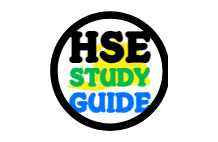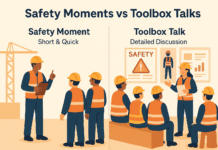
Fall Protection TBT
Good morning team,
Today’s talk is about Fall Protection — a life-saving topic that’s at the heart of construction and maintenance safety.
Falls remain the leading cause of fatalities in our industry. They happen quickly, often without warning, and the injuries are usually serious or deadly. But here’s the thing — every fall is preventable when the right equipment, planning, and training are in place.
We’re going to cover:
- Why fall protection matters
- The main hazards
- Fall protection systems
- Correct equipment use
- Inspection and maintenance
- Do’s and don’ts
- Real-life example
- Closing message
1. Why Fall Protection Matters
- Falls are the top cause of death in construction globally.
- A fall from just 2 meters can be fatal.
- Survivors often face life-changing injuries: broken spines, brain trauma, paralysis.
- Most falls happen because equipment wasn’t used, was used incorrectly, or was faulty.
2. Common Fall Hazards
- Working on roofs, scaffolds, ladders, and platforms.
- Open floor edges and unprotected sides.
- Holes in floors or roofs.
- Fragile surfaces like skylights.
- Working near leading edges during steel erection.
- Poor weather conditions causing slippery surfaces.
3. Fall Protection Systems
Fall protection falls into three main categories:
3.1 Fall Prevention
- Eliminates the hazard altogether.
- Examples: Guardrails, toe boards, safety gates.
- Most preferred method — stops you from falling in the first place.
3.2 Fall Restraint
- Uses equipment to restrict movement to safe areas.
- Example: Lanyard length prevents reaching the edge.
3.3 Fall Arrest
- Stops a fall after it begins.
- Requires full-body harness, shock-absorbing lanyard or SRL (self-retracting lifeline), and anchor point.
- Must limit fall distance and arresting force.
4. Components of a Fall Arrest System (ABC)
- A – Anchorage: Strong, certified point capable of supporting required loads.
- B – Body Support: Full-body harness distributes forces evenly.
- C – Connector: Lanyard, SRL, or rope grab connecting you to the anchor.
5. Correct Use of Fall Protection Equipment
- Select the right system for the job.
- Inspect harness, lanyard, and connectors before every use.
- Wear harness snugly — chest strap at mid-chest, leg straps secure.
- Attach to an anchor point above shoulder height when possible.
- Avoid swing falls — position anchor directly overhead.
- Use compatible components from reputable manufacturers.
6. Equipment Inspection and Maintenance
- Daily visual inspection before use.
- Check webbing for cuts, frays, burns, or chemical damage.
- Check stitching for loose or broken threads.
- Inspect metal parts for cracks, corrosion, or deformation.
- Remove damaged equipment from service immediately — tag “Do Not Use”.
- Store in a clean, dry place away from direct sunlight and chemicals.
7. Rescue Planning
- A fall arrest system is useless without a rescue plan.
- Workers left suspended too long can suffer suspension trauma.
- Rescue must be prompt — ideally within 10 minutes.
8. Do’s and Don’ts
✅ Do:
- Always use fall protection at required heights.
- Keep your lanyard short to minimize fall distance.
- Maintain 100% tie-off — always be connected.
- Report damaged or missing equipment.
❌ Don’t:
- Tie off to pipes, guardrails, or other non-rated anchors.
- Use equipment you haven’t been trained to use.
- Wrap lanyards around sharp edges without protection.
- Assume “I’ll be fine for a quick job” — that’s when accidents happen.
9. Real-Life Case Study
In 2022, a roofing contractor fell 5 meters when he unhooked his lanyard to move across a roof edge without a second attachment point. He died instantly. The investigation revealed he was not following 100% tie-off policy.
Lesson: Even experienced workers are at risk if they break the rules. The equipment only works if you stay connected.
10. Worker Engagement – Q&A
- What does the “ABC” of fall protection stand for?
- What’s the difference between fall restraint and fall arrest?
- How long should rescue take after a fall?
11. Closing Words – Bringing It Back to the Start
Alright team, we began this morning by saying that falls are the number one killer in our industry. That’s not a statistic — that’s a reality we can change.
Fall protection isn’t optional. It’s your lifeline — literally.
Wear it, use it correctly, inspect it, and never cut corners.
If your anchor doesn’t look right, if your harness feels wrong, or if you’re not sure about the setup — stop and fix it before you continue.
Every tie-off, every inspection, every cautious step is a step toward going home safe at the end of the day.
Stay alert, stay safe, and let’s have a productive day.
























